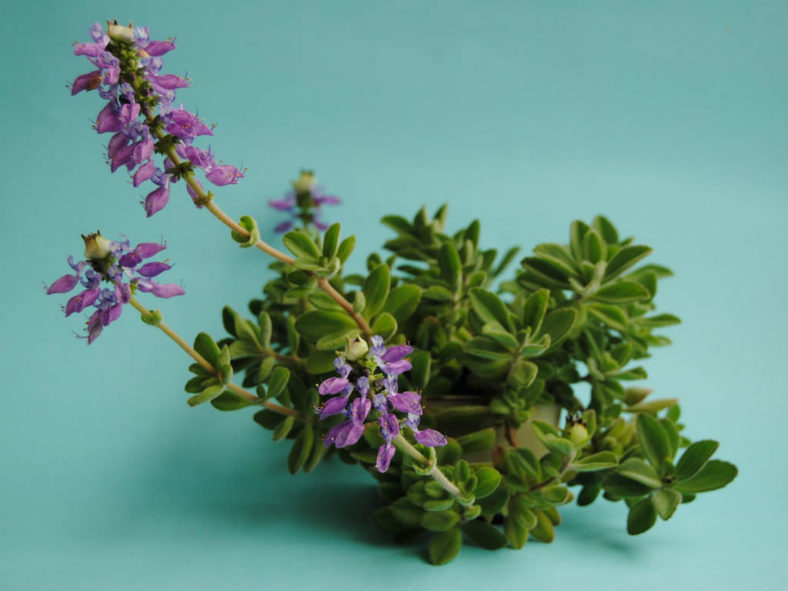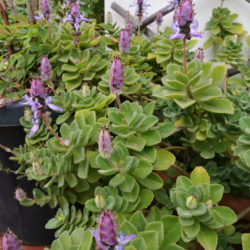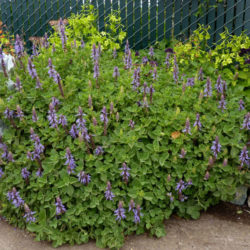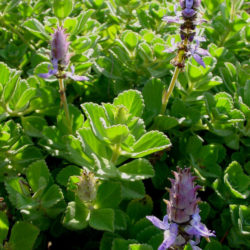Scientific Name
Coleus neochilus (Schltr.) Codd
Common Name(s)
Blue Coleus, Fly Bush, Lobster Flower, Lobster Bush, Mosquito Bush, Poor Man's Lavender, Smelly Spur Flower
Synonym(s)
Coleus palliolatus, Coleus schinzii, Plectranthus neochilus
Scientific Classification
Family: Lamiaceae
Subfamily: Nepetoideae
Tribe: Ocimeae
Subtribe: Plectranthinae
Genus: Coleus
Description
Coleus neochilus, formerly known as Plectranthus neochilus, is a bushy, often much-branched succulent with decumbent to erect stems that bear fleshy, grey-green leaves. It can grow up to 20 inches (50 cm) tall and 2 feet (60 cm) wide. The leaves are grey-green, finely hairy, often slightly sticky, and unpleasantly scented. They are obovate to elliptic, with few-toothed margins, and measure up to 2 inches (5 cm) in length and 1.4 inches (3.5 cm) in width.
The flowers are mauve-purple, up to 0.8 inches (2 cm) long, with a tube, short upper lip, and long, boat-shaped lower lip. They appear from spring through late fall in terminal spike-like racemes that can reach 6 inches (15 cm) in length.
Origin
Coleus neochilus is native to South Africa, Eswatini, Namibia, Botswana, Zimbabwe, and Zambia. It grows in dry brushlands, open and sometimes rocky woodland.
Etymology
The specific epithet "neochilus (nee-oh-KY-lus)" means "new lips" and to the large lower lip of the flowers.

Hardiness
USDA hardiness zone 8a to 10b: from 10 °F (−12.2 °C) to 40 °F (+4.4 °C).
How to Grow and Care
Plectranthus are easily cultivated and require little extra attention or special treatment. They enjoy well-composted soil and, as a rule, thrive in semi-shade or cool positions on south-facing aspects. Thus, they are ideally suited to growth under the shade of trees. They are generally shallow-rooted and enjoy adequate water, but they store water in their stems and are resistant to prolonged periods of drought. Plectranthus are often grown for their attractive foliage, flowers, or both and vary in their growth forms from dense prostrate ground covers to sub-shrubs and large shrubs.
Although they are frost-tender, they are usually grown in shady, protected places and, as such, are afforded some protection from frost. Since they all flower at the end of the growing season, frost does not affect flowering. If the plants are affected by frost, they can be cut back at the end of winter and will grow out rapidly. Once the plants have been established for a year or more, they become woodier at the base and are more resistant to frost damage.
See more at How to Grow and Care for Plectranthus.
Cultivars
Links
- Back to genus Coleus
- Succupedia: Browse succulents by Scientific Name, Common Name, Genus, Family, USDA Hardiness Zone, Origin, or cacti by Genus
Photo Gallery
Click on a photo to see a larger version.


